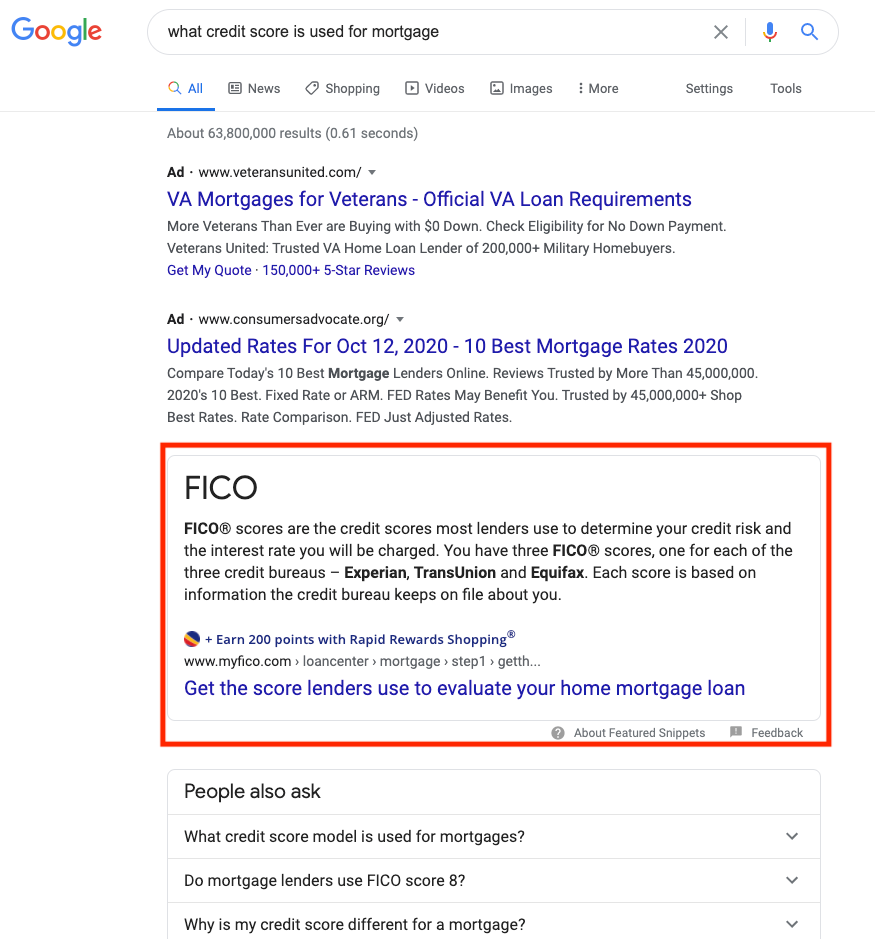The real estate industry is highly competitive, especially in major cities.
From the solopreneur trying to make ends meet to the massive national conglomerates, everyone is out to do whatever they can to increase their visibility and get those listings.
Luckily for you, online, you don’t have to compete with hundreds of thousands of other real estate agents.
Since the area you serve is hyperlocal, you’re only competing with others in that same hyperlocal area.
Of course, depending on location, the competition may be more fierce, even among small businesses.
But, using local SEO gives you a fighting chance. As long as you know what you’re doing.
What follows are 10 tips to improve your real estate website so that it can dominate local search.
1. Start with an SEO Audit

Before you can figure out where you’re going, you need to figure out where you are.
An SEO audit helps to determine which pages are doing well and where you can make improvements.
Though performing an audit can be time-consuming, it serves as a benchmark for your progress and gives you the information you need to create a roadmap.
- Does your site rank locally?
- Are you getting any organic traffic?
- Are you generating leads or converting clients?
If the answer to any of these questions is no, there’s a reason for it. The SEO audit can help you figure it out.
Key areas to focus on include:
- Site Structure: XML sitemap, robots.txt, redirects.
- Page Structure: Titles, meta descriptions, heading tags, alt tags, URLs.
- Content: Structure, keyword and link placement, visual elements, duplicates, redirects, and canonical tags.
- Links: Outbound and inbound links, interlinking with other pages on your site, broken links.
- Usability: Accessibility, mobile-friendliness, site speed.
When you improve everything in these five areas, you should see an increase in your organic traffic.
Use Google Analytics to see which pages need the most attention, and use the Google Search Console to find issues that need to be fixed.
There, you’ll also find the Mobile-Friendly Test tool and PageSpeed Insights tool.
If you need help keeping track of all the things you need to do as part of your audit, take a look at this SEO audit checklist created by Search Engine Journal.
2. Optimize for Search
With your audit results in hand, create a plan to address each of the issues.
A systematic approach is best, to ensure you don’t overlook anything.
After you’ve fixed the problem areas, look for other ways to improve your overall optimization.
Focus on:
- Keyword research and analysis
- SEO-friendly URLs
- Optimization of titles and meta descriptions
- Image optimization
- Proper outbound and internal link placement
- Broken links
- Redirects
- Site speed optimization
- Content optimization
- CTR and bounce rate optimization
- Schema
- Robots.txt
- XML sitemap
- SSL certificate
- W3C validation
3. Make Sure Your Website Is Accessible

Everyone, regardless of disability, deserves to be able to access the internet with ease.
Screen readers help the visually impaired, but if the website isn’t built with accessibility in mind, the user experience suffers.
When most people think of the Americans with Disabilities Act, they don’t consider how it applies to online media as the law predated widespread internet access.
All businesses need to make sure their sites are ADA compliant, but this is especially true for real estate as agents are frequent lawsuit targets.
Basic guidelines for ADA compliance include:
- Any media players or PDF documents should contain a link to where the necessary software can be downloaded.
- Users must be notified of any invalid information entered. For instance, if a form requires an email address and the user fails to enter one, they must be alerted.
- The website’s appearance doesn’t rely solely on color.
- Buttons and links are clearly named.
- Implementing a “skip navigation” function to ensure users can easily access the content.
- All images need to contain alt text so that screen readers can read it.
- Video content needs to have text captions.
- Audio and video content need transcripts or descriptions.
- Any audio that plays can be stopped immediately.
- Page titles should describe the page content and not mislead users.
- Users are notified of any time limits.
- The site contains no empty links or heading tags.
- “Em” and “strong” are used instead of “b” and “i” tags.
- Headings appear in a logical order.
- Users can use their keyboards to navigate the site.
- Every page has language code in the header to identify the language the code is written in and should be read in.
- Forms have both labels and legends readable by screen reader software.
- Any automatic blinking, flashing, or scrolling can be disabled.
- No strobe effects or rapidly flashing animations or color are present.
- Any interactive elements do not significantly affect the layout or readability of the page.
- Any keyboard focus should not lock on any specific element.
- The site passes W3C HTML validation without major errors.
To be fully ADA compliant, you must also ensure:
- There are multiple ways to access the site’s pages.
- When the window is resized to 200%, the text should remain in form without affecting the page layout or usability.
- Menu and button order and presentation should remain consistent across the entire site.
- Any live audio or video content should have text captions.
- Images do not replace functions that can be achieved by text.
- Only links are underlined.
- Redundant links on the same page are eliminated or at least reduced.
- The keyboard focus needs to be highly visible and clear all the time.
- If the user encounters any input errors, suggestions to fix the issue are provided.
- The contrast ratio between background elements and readable elements needs to be at least 4:5:1.
- If the site uses multiple languages, the languages should be identified in the code of each page.
4. Optimize for Mobile Devices
More than half of global internet traffic (52%) comes from mobile devices.
That means, if you want to keep Google and your potential customers happy, your website needs to operate smoothly on smartphones and tablets.
When it comes to mobile optimization, the key areas to focus on are:
- Responsive design
- Page speed
- Hosting speed
- Homepage
- Site navigation
- Site search
- Forms
- Conversions
- Usability
A responsive design automatically adjusts your site to fit any device’s screen, which is crucial for usability.
Fast page speed is important because if visitors have to wait too long, they’ll likely click back to the search results to find a more user-friendly site.
A general rule of thumb is to keep things as simple as possible.
The more a user has to navigate through to accomplish their goal, the less likely they will be to follow through all the way to the end.
The Mobile-Friendly Test tool will help you determine if your current site passes the test and present you with a list of issues that need your attention.
To speed things up, minify your code and optimize your images. Use an emulator to see how your content is displayed across multiple devices.
5. Add Your Site to Google My Business & Other Relevant Directories

A big part of local SEO focuses on local citations.
The more places where you have your site listed, with your name, address, and phone number consistent across all of them, the better.
Start with Google My Business, and keep your profile up to date.
Complete as much of the profile as you possibly can.
Spice it up with photos, videos, and other relevant content.
This can help you rank higher in Google’s local searches, and increases the chances you’ll rank better than sites like Zillow and Trulia, but don’t forget to sign up on those, too.
Other directory websites to list your business on are:
- Realtor.com
- Yahoo Homes
- RedFin
- HomeSnap
- Neighborhood Scout
- Zoocasa
- Local.com
- Yelp
- Yellow Pages
- Manta
- Better Business Bureau
- Merchant Circle
- Angie’s List
- CitySearch
- Yellow Pages
- Whitepages
Do a quick search on each of the platforms you’re interested in using.
You may already have a business profile there that just needs to be claimed.
Once verified, you’ll have greater control over the information presented there.
Because people do a lot of research on these platforms, you’re not only boosting your SEO, but you’re also creating additional sales channels to increase lead generation.
6. Get Social
Social media won’t directly affect your search engine rankings, but it is still an important part of your digital marketing strategy.
Why?
It helps to:
- Connect with your targeted audience.
- Increase exposure.
- Build authority, trust, and awareness.
- Drive more traffic to your website.
- Drive conversions.
Real estate businesses will have a hard time gaining online visibility without social media accounts.
It’s tempting to try to be everywhere on social media, but it’s better to choose a few platforms and do them well than to spread yourself so thin your content quality suffers.
Beyond Facebook, consider Instagram, Twitter, and Pinterest.
Use these social networks to share your blog content, videos, and other important information such as statistics, news, and more.
Use Instagram and Pinterest to promote your website with visual content.
Showcase the best sales opportunities on Facebook.
Whenever you share content on social, add local-focused hashtags and descriptions with geo-targeted keywords.
7. Publish Useful Content on Your Blog
Having a blog on your website gives you additional opportunities to target relevant keywords.
As a small business, you have limited resources and cannot afford to compete with large enterprises so that’s why it’s important to prioritize the kinds of content you will include.
Your blog should be a mix of:
Informative Articles
These are the posts about your neighborhood, such as:
- Walkability.
- Cost of living.
- Social life.
- Schools.
- Crime.
- Restaurants.
Describe the pros and cons of the neighborhood and provide unique perspectives.
Visual Content
This can include:
- Images.
- Video tours.
- Virtual tours.
- Live stream videos.
- Infographics.
Interviews with Local Business Owners
Conducting interviews with local business owners can take some time, but it will be worth it.
These interviews give a unique perspective on your neighborhood and demonstrate to potential home buyers how nice your area is.
Business owners are likely to share these interviews on their social media platforms and websites to help bring awareness and increase your reach.
Before posting the content and sharing it, take a few minutes to optimize it for search engines.
Include the relevant geographic keywords in titles, headings and subheadings, meta descriptions, alt text, hashtags, and URLs.
8. Create Video Content
Content is often the easiest to produce, but if you can, you should invest in creating and optimizing video content.
It can help you distinguish yourself from the competition.
Consider:
- Launching and optimizing a YouTube channel.
- Consistently upload videos to that channel.
- Share or upload your videos to your website and social media pages.
- Run live streams on Facebook and YouTube to build a larger audience.
Need ideas for content you can create?
Try:
- Open house videos.
- Listings videos (10 Best Homes for Families).
- Q&A live-streams.
- Q&A Videos.
- Virtual tours.
You can repurpose that video content to create other content to use on social media and on your blog so you can make it work for you in as many ways as possible.
Spend time optimizing your video content for local search.
Add your geo-targeted keywords to headlines, descriptions, and hashtags.
For accessibility, add subtitles and a transcript.
If you add the transcript in the description, it makes it easier for the search engines to crawl and index the content.
Include links to your social media profiles, website, and any related listings in the description, too.
9. Use Structured Data Markup
Structured data markup, or schema, helps Google and other search engines learn more about the kind of content on your page.
If your site to display rich snippets in search, you need to implement it where possible.
Real estate businesses can benefit from:
- RealEstateAgent
- Offer
- Product
- Place
- RentAction
- Residence
- PostalAddress
- SearchResultsPage
- WebPage
What you’ll use depends on your site structure.
If you’re unsure of what to use or where to start, consult with an SEO professional.
Once you’ve added schema to your site, check it for accuracy with the Structured Data Testing Tool.
10. Try to Earn Featured Snippets

Want to be featured at the top of the SERPs?
Featured snippets can be a game changer.
Grabbing a featured snippet can:
- Increases traffic.
- Attract users interested in your offers.
- Improves your search ranking.
- Increase conversion rates.
It can be difficult to earn them, and only a few businesses have them in local search.
Instead of trying to compete with major websites that may have already grabbed the spot, look for queries that don’t already have one.
However, keep in mind that Google doesn’t display the featured snippet with geo-targeted queries.
To compensate, you can:
- Run a keyword analysis to find relevant, geo-focused long-tail keywords and phrases.
- Place these selected keywords in high-quality content.
- Structure and markup your content properly. Use question-focused heads and subheads, shorter paragraphs that could fit into a featured snippet section, H1-H2 tags, tables, lists, charts, images, etc.
- Create a Q&A section on your site. Specific answers are more likely to be displayed as featured snippets, especially if they include images and lists.
Summary
Despite the fierce competition you’re up against in real estate, there’s still plenty of opportunities.
Using these SEO tips will help you dominate local search.
Investing in SEO with these strategies can help you rank well, even against the big names in the industry.
If you’re not familiar with SEO, it’s best to consult with or hire a professional, to avoid making mistakes.
More Resources:
- Local SEO: The Definitive Guide to Improve Your Local Search Rankings
- A Complete Local SEO Checklist
- Citations & Local SEO: The Ultimate Beginner’s Guide
Image Credits
All screenshots taken by author, October 2020





![[SEO, PPC & Attribution] Unlocking The Power Of Offline Marketing In A Digital World](https://www.searchenginejournal.com/wp-content/uploads/2025/03/sidebar1x-534.png)